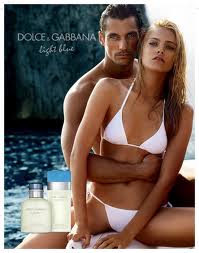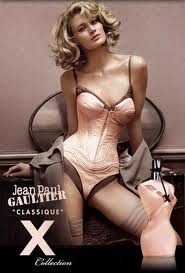We all know the horrors resulting from the existing IFRA regulations and how they have gutted some of the most famous perfumes in history. And most of you know that the EU is now trying to completely ban some of those legends, like Chanel No. 5, Miss Dior and a few others. But a Reuters article I recently read pointed out just how extensive the impact of some of the proposed changes would be, if they are passed — changes that could cripple the $25 billion a year global perfume industry.
As many of you know, the Scientific Committee on Consumer Safety (SCCS), an advisory body for the European Commission, is proposing a total ban on oakmoss and tree moss in all perfumes. These changes are different from prior restrictions on perfume ingredients because they’re coming from an agency outside the perfume industry. Before, “changes to perfume formulas [came] as a result of increasingly severe restrictions imposed by the industry’s self-regulatory body, the International Fragrance Association (IFRA),” though ingredient shortages or cost-cutting … also played a part.” Now, however, the proposals would come from an outside body — the EU — and would be part of a European law that would impact perfumes world-wide through even more severe restrictions. In addition, the SCCS wants 12 substances used in hundreds of perfumes on the market today to “be limited to 0.01 percent of the finished product, a level perfume makers say is unworkable.”
What I didn’t realise is the extent of the damage that would result if those proposals are passed. IFRA estimates that over 9,000 (!!!) perfume formulations would have to be changed. 9,000!
The SCCS also wants extensive perfume labeling which is fine, but I think it would definitely add to perfume costs. “Consumer groups were behind an amendment to an EU law in 2005 forcing perfume brands to label any of 26 potentially allergenic ingredients. The brands now list those ingredients – in Latin. Now the SCCS is proposing to extend that list to more than 100 potential allergens.” (Emphasis added.)
While I was extremely amused by that Latin bit, the thing that I found most surprising and interesting in that article was the apparent rift within the perfume industry on how to respond to the proposed EU changes.
INDUSTRY SPLIT
The proposals have also revealed schisms in the perfume industry – a lack of unity that makes it harder to lobby with one voice.
Brand owners such as Chanel and LVMH and scent-makers such as Coty, L’Oreal, Procter & Gamble, Givaudan and Symrise all have different goals.
LVMH, which owns Dior and Guerlain, and Chanel are lobbying Brussels to protect their perfumes, many of which were created decades ago.
“It is essential to preserve Europe’s olfactory cultural heritage,” LVMH told Reuters in an emailed statement.
L’Oreal, however, already uses many synthetic ingredients in its perfumes and is thus keeping a low profile on the issue, industry representatives said.
Other companies making perfumes on an industrial scale for luxury brands, such as IFF, Givaudan and Firmenich, are less concerned about the SCCS proposal because they can rely on synthetic materials and make new perfumes using them but the restrictions, if enforced, would force them to reformulate many of their scents on a scale never seen before.
Givaudan and L’Oreal declined to comment for this report.
(Emphasis added.)
The sharply differing reactions was fascinating to me. I must admit, my favorite part though was the bit about L’Oreal. It is a company which I blame in large part for their destruction of my beloved Opium, along with much of the YSL perfume brand, so I rather enjoyed Reuters giving them a sharp dig and emphasizing the synthetic nature of their fragrances nowadays. I bet they’re keeping mum over all these changes! Of course they are; what do they care about natural ingredients or the use of oakmoss? I mean, have you smelled what they’ve done to Opium?! Have you read people’s reactions to reformulated Kouros? I could go on, but this is not the place for my pet peeve about the end of Opium or YSL’s glory days.
Still, the article’s discussion of Chanel and LVMH’s lobbying efforts made wonder why those companies shouldn’t have their perfumes be designated as the olfactory equivalent of a historic landmark? Such protected status has been accorded to the Taj Mahal and for the Great Wall of China — why not for Chanel No. 5 or Shalimar? Is being a nanny state for the 1% (or even 3%) of EU citizens worth destroying an olfactory part of Europe’s heritage as well as a world treasure? Isn’t French perfume as much a part of France’s culture, heritage and identity as the Eiffel Tower or Versailles? I certainly would argue that French perfumes have given the world more concrete, daily, extended benefit or joy than the Eiffel Tower ever did. You don’t see anyone trying to cordon off the Eiffel Tower due to 2% to 5% of the world’s population suffering from vertigo, do you? I wish LVMH much luck and think their argument is an utterly brilliant one. Bravo to whichever lawyer thought it up.
Another interesting part of the article to me was the deep sadness of many actual perfumers at the changes that old, beloved classics have gone through, changes that far preceded the 2008/2010 IFRA rules but which perfume companies have snuck in quietly over time. Some changes go as far back as decades ago!
‘Most perfumes which are 20 years old or more will have already been reformulated several times because science has evolved and we want to ensure the safety of consumers,’ said IFRA president Pierre Sivac.
Many traditional essences that perfume creators consider core to their craft have been blacklisted in recent decades. Birch tar oil was removed from Guerlain’s Shalimar several decades ago because it was thought to be a cancer risk. Clove oil and rose oil, which contain a component called eugenol, and lavender, which contains linalool, may only be used in limited quantities in case of allergies.
And oakmoss, one of the most commonly used raw materials because of its rich, earthy aroma and ability to ‘fix’ a perfume to make it last longer, has been increasingly restricted because of worries about skin sensitivity.
That means perfumes like Shalimar, Chanel’s No. 5, Dior’s Eau Sauvage and Poison, Yves Saint Laurent’s Opium and Cacharel’s Anais Anais are only a shadow of their original, olfactory selves, according to industry experts.
“Eau Sauvage was a real chef d’oeuvre in its original form,” retired perfume-maker Pierre Bourdon, who created Dior’s Dolce Vita and Yves Saint Laurent’s Kouros, said of the 1966 scent. “It used to be very green and fresh. Today, it has been replaced by something softer and duller.”
He contends the scent has been stripped of furocoumarins, a class of organic chemical compounds produced by plants like bergamot that can cause dark spots on the skin when exposed to the sun.
Bourdon said he still wore Eau Sauvage because it reminded him of his father, Rene, who as deputy head of Dior perfumes in the 1960s and 1970s supervised the creation of the perfume.
Raymond Chaillan, who collaborated on the creation of both Anais Anais and Opium, believes both have changed. When it was launched in 1977, the original Opium was full of eugenol and also contained linalool, and limonene found in citruses. In large doses, Eugenol can cause liver damage, while oxidized linalool can cause exzema and prolonged exposure to pure limonene can irritate the skin.
Edouard Flechier, who created Dior’s Poison in 1985, says that fragrance has changed since its inception.
“I know the original formula by heart and I imagine they (Dior) had to change progressively because of new IFRA regulation.”
Natural ingredients are more supple than synthetic ingredients and give more depth to a perfume as well as a subtle play on various notes, says [Frederic] Malle, adding that IFRA restrictions have cost him “hundreds of hours” and “endless tests.”
If the industry largely got away with quietly tweaking its fragrances up till now, however, experts say that will be impossible if Europe backs the proposals aimed at wiping allergenic substances from the perfume-makers’ palettes altogether.
You can read the full article here, but I am interested in your reactions to some of the points it raised. Did you find the schism within the perfume industry to be as surprising as I did? Did you know of some of the ingredients removed from scents like Shalimar (the birch tar oil), Opium or Eau Sauvage? What about the point raised by Patrick Saint-Yves, president of the French Society of Perfume Creators (SFP), regarding the contradiction in encouraging the use of fragrance oils in aromatherapy massages (and hence, in use on the skin) but, yet, targeting them when used in perfumery? Do you think niche perfumers like Frederic Malle and Serge Lutens — both of whom have recently stated flat out that they may no longer be able to continue in this business — will be able to manage even half as successfully as they have now if their existing and future fragrances are essentially restricted?
I’d love to hear any and all thoughts you may have on this subject.










